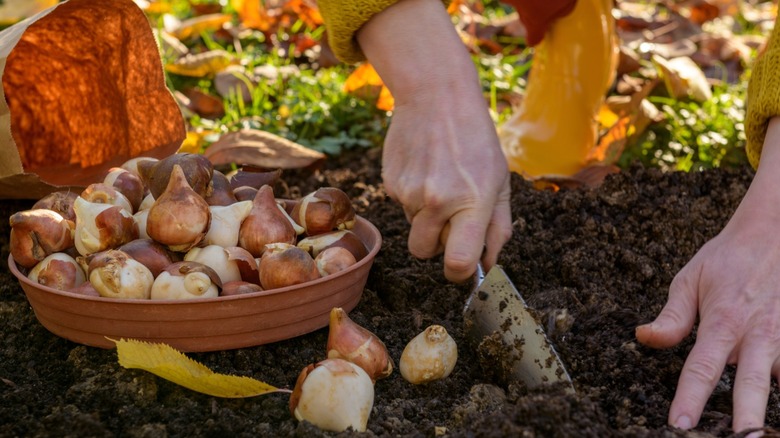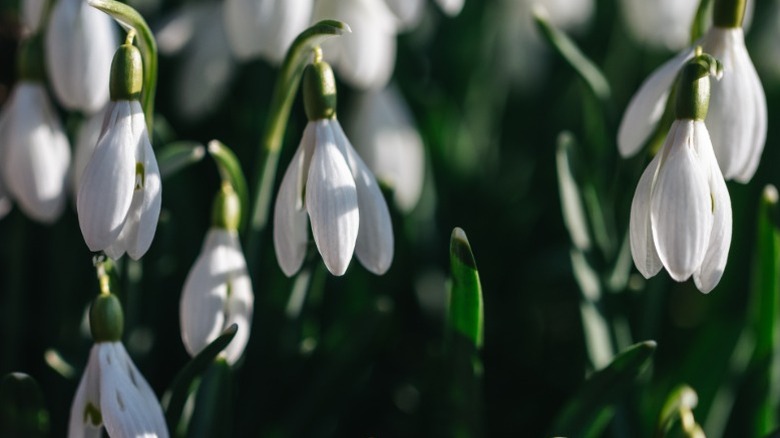It's Not Too Late To Plant This Bulb For Beautiful Early Spring Blooms
Autumn strips the last leaves from the trees. Frost bites at the lawn. Garden beds are bare, tools stored, and flowers long gone. The season feels finished, but is it? There's one bulb you can still plant now, long after most perennials are tucked away. Come spring, they'll be the first flowers to bloom. While snow still clings to the ground, these delicate white flowers will push through the cold to announce winter's end. Say hello to the snowdrop (Galanthus spp.).
October is prime time to plant them. The soil is cool but not locked in frost, giving roots a chance to settle before the freeze. Snowdrops also need a cold stretch, with temperatures below 20 degrees Fahrenheit, to trigger blooms, and fall planting guarantees it. While other plants wait for warmer days, snowdrops gather resources underground, poised to emerge the moment the season turns. Plant now, and you'll be rewarded with one of spring's earliest and most welcome shows.
Native to Europe and Asia Minor, snowdrops may be small, but they never go unnoticed. Standing 3 to 6 inches tall, each stem bows with a white, bell-shaped bloom tipped in green. Scatter them under bare trees, weave them through rock gardens, or edge a pathway with clusters. Wherever they appear, snowdrops create a woodland scene that feels delicate but yet intentional.
Bringing your low-maintenance snowdrops to life
Planting snowdrops is simple, but a little care up front helps them thrive. Set each bulb 2 to 3 inches deep in loose soil, and space them the same distance apart. They'll do well in many types of soil, as long as it's well-drained. Because these blooms are small, they shine in groups; plant two dozen or more for a true woodland effect. Over time, the bulbs will naturalize, slowly spreading into wider drifts that return year after year.
Cozy in USDA hardiness zones 3 through 7, these early bloomers do best in spots that get full or partial sun. Water needs are modest. In cooler climates, rainfall is usually enough, while warmer zones may call for extra moisture during dry spells. Once established, snowdrops require little attention. These beautiful white flowers may help keep squirrels out of your garden, as well as deer, rodents, and other pests, making them a reliable addition to your yard.
After flowering, resist the urge to tidy up. The slender green leaves feed next year's bulbs, so let the foliage fade naturally before trimming. A light fertilizer after bloom can boost growth, but it's optional. Check care instructions to ensure your plants receive the right amount of nutrition. The bulbs can irritate skin and are toxic if ingested, so wear gloves when planting and keep children and pets away. Otherwise, snowdrops ask for little in return. Plant them this fall, and before long, they will give your garden a uniquely woodland feel.

